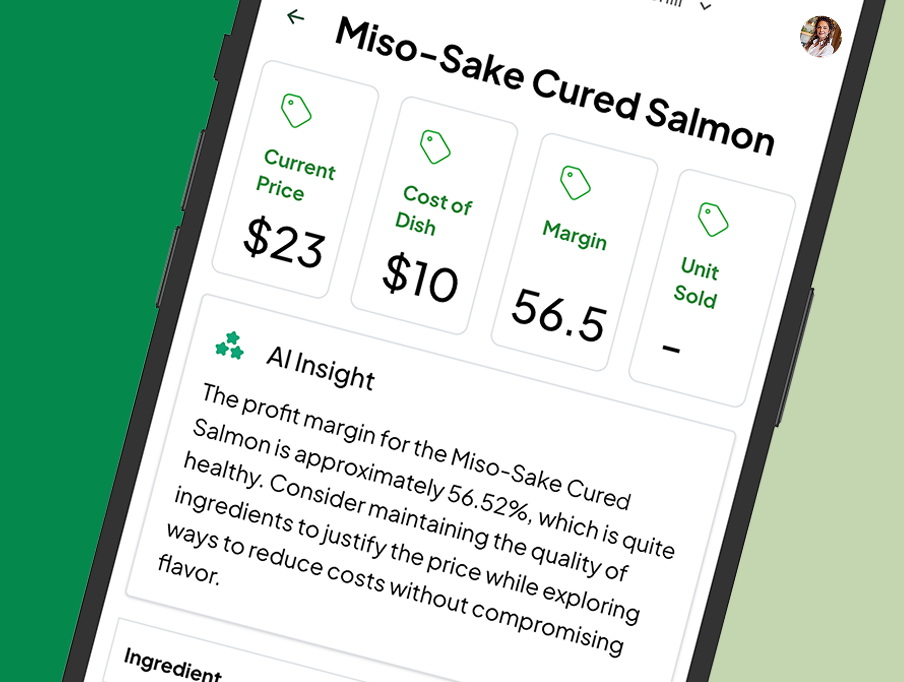Running a restaurant is an art, a science, and—let’s be real—a numbers game. You can have the best chef in town, a killer ambiance, and a menu that makes mouths water, but if your numbers aren’t adding up, you’re bleeding cash.
At MRGN, we get it. You didn’t open your restaurant to become a finance guru. That’s why we built a platform that helps restaurants like yours manage their finances without needing an accounting team or CFO. One of the biggest game-changers? Tracking your Cost of Goods Sold (COGS).
COGS is the backbone of your restaurant’s profitability. If you’re not keeping a close eye on it, you could be overpaying for ingredients, wasting food, or pricing your menu in a way that leaves money on the table—literally. Let’s break down why tracking COGS is essential and how it can save your restaurant thousands.
What is COGS, and Why Should You Care?
COGS includes all the direct costs that go into making your dishes—ingredients, packaging, and anything else tied to your menu items. Unlike overhead costs like rent and utilities, COGS fluctuates based on sales and purchasing decisions. That’s why it’s one of the most controllable costs in your business.
Here’s why tracking COGS is crucial:
- Profitability: If you don’t know your COGS, you don’t know if your menu pricing actually makes sense. You could be selling dishes at a loss without realizing it.
- Food waste control: Untracked COGS often leads to over-purchasing, spoilage, and unnecessary waste, draining your profits.
- Better supplier negotiations: When you track ingredient costs, you have leverage to negotiate better prices and spot cost increases early.
- Financial forecasting: If your COGS is erratic, predicting your restaurant’s financial future becomes a guessing game.
The Hidden Money Drain: What Happens When You Don’t Track COGS
Many restaurant owners assume they have a handle on their costs—until they start digging into the numbers. Here’s what can go wrong when you don’t track COGS:
- Your Profits Disappear Without a Trace Let’s say you serve a best-selling burger for $12. You estimate the ingredients cost around $4 per burger. But when you actually calculate your COGS, you realize it’s closer to $5.50 because of unnoticed supplier price hikes, portion inconsistencies, and occasional waste. That extra $1.50 might not seem like much, but if you sell 500 burgers a week, you’re losing $3,000 per month—just on one menu item.
- Your Menu Pricing is a Shot in the Dark Without tracking COGS, menu pricing becomes a wild guess. Maybe you set prices based on competitors or gut instinct rather than hard data. The result? Some items are priced too low to be profitable, while others are priced too high, scaring off customers. By calculating COGS accurately, you can price each item with confidence, ensuring healthy profit margins without alienating diners.
- Food Waste Eats Away Your Bottom Line Restaurants waste an average of 4-10% of food purchases due to spoilage, over-portioning, and improper storage. If your restaurant spends $15,000 a month on ingredients, that’s up to $1,500 going straight into the trash.
Ingredient costs fluctuate—sometimes dramatically. If you’re not updating your COGS regularly, you won’t spot these increases in time to react. MRGN helps by automatically tracking changes and alerting you when prices creep up.
Tracking COGS alongside inventory helps you identify waste patterns, adjust orders, and tighten portion control—saving thousands in the process.
How to Track COGS Without a Headache
We know it’s a time-consuming nightmare to track manually. That’s where MRGN comes in. Our platform automates financial tracking so you don’t have to spend hours buried in spreadsheets. Here’s how you can get started:
1. Break Down Your Ingredients Costs
List out every ingredient in each dish and calculate the cost per serving. A basic example:
- Chicken breast (8 oz): $2.50
- Sauce (2 oz): $0.50
- Seasoning: $0.10
- Side of veggies: $1.00
- Total cost per plate: $4.10
Compare this to your menu price. If you’re charging $10, but after labor and overhead costs your profit is razor-thin, it’s time to adjust.
2. Regularly Update Supplier Prices
Ingredient costs fluctuate—sometimes dramatically. If you’re not updating your COGS regularly, you won’t spot these increases in time to react. MRGN helps by automatically tracking changes and alerting you when prices creep up.
3. Monitor Waste and Adjust Portions
Are kitchen staff over-serving portions? Are ingredients going bad before they’re used? By tracking COGS in real-time, you can pinpoint waste issues and tweak portion sizes, saving you thousands.
4. Optimize Your Menu Based on Margins
Once you know your COGS, you can categorize menu items into:
- High-margin winners: Keep these and promote them more.
- Low-margin underperformers: Either reprice, rework, or remove them.
- Break-even items: Assess if they bring enough value (e.g., signature dishes) or need adjustments.
5. Use Technology to Take the Guesswork Out
Spreadsheets and guesswork aren’t sustainable. MRGN automates COGS tracking, integrates with inventory and sales data, and helps you make real-time, data-backed decisions.
How MRGN Helps Restaurants Save Thousands
We built MRGN because we saw too many restaurants struggling with financial blind spots. Here’s how we make tracking COGS (and overall financial management) effortless:
- Automated tracking: No more manual number crunching—our system pulls real-time data on sales, inventory, and costs.
- Smart forecasting: We help you predict when it’s time to cut costs, renegotiate supplier contracts, or adjust menu pricing.
- Profitability insights: Our platform highlights which menu items drive profits and which are silently draining your revenue.
- Labor cost integration: COGS alone isn’t enough—MRGN helps restaurants optimize labor costs alongside ingredient expenses.
The Bottom Line: Every Penny Counts
The restaurant industry has tight margins, and every wasted dollar matters. Tracking COGS isn’t just about cutting costs—it’s about maximizing profitability while keeping your quality and customer experience intact.
With MRGN, you don’t have to be a financial expert to take control of your restaurant’s numbers. Our platform does the heavy lifting, so you can focus on what you do best—creating amazing dining experiences.
Want to see how much you could be saving? Try MRGN today and start making every penny count.





